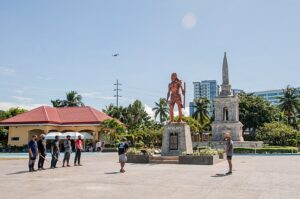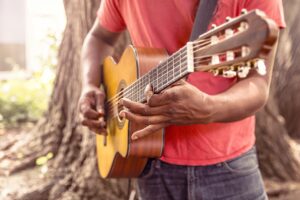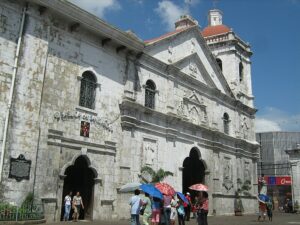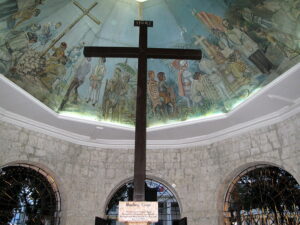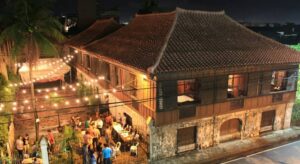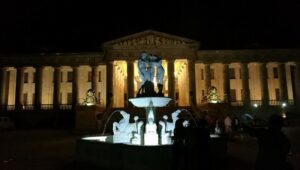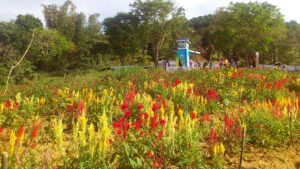Mactan Tourist Spots
Mactan Shrine
Step back in time at Mactan Shrine, where the Philippines witnessed its first historic battle between brave local warriors and foreign invaders. A magnificent 20-meter bronze statue of Lapu-Lapu, the country’s first hero, stands tall in this scenic location. Every April 27th, the annual Kadaugan sa Mactan re-enactment brings history to life, allowing visitors to experience this pivotal moment in Philippine history.
Guitar Factory
Cebu, particularly Lapu-Lapu City in Mactan Island, boasts a thriving guitar-making industry. Families like the Alegres and the Malingins are pioneers in Cebu’s guitar-making industry, and their tradition has been passed down through generations. These skilled luthiers, as guitar makers are called, are known for their craftsmanship, producing world-class quality instruments. Cebu guitars are known for their melodious tones and beautiful designs.
Basilica Minore Del Santo Niño
Recognized as the oldest Roman Catholic church in the Philippines, the church was built on the spot where the iconic statue of the Child Jesus, known as the Sto. Niño, was found. The current location also houses a museum and a library which boasts of historical relics and artifacts dating back to the 17th century.
Magellan’s Cross
Magellan’s Cross is a cultural and historical landmark in Cebu City, Philippines. When Ferdinand Magellan first landed on the island of Cebu, he was warmly welcomed by Rajah Humabon and Queen Juana. This meeting led to their baptism and marked the birth of Christianity in the Philippines.
Just a few steps across from the Basilica Minore del Santo Niño, this wooden cross is reputedly the one that Portuguese explorer Ferdinand Magellan planted on the shores of Cebu to mark the conversion of the island’s locals to Christianity. Although the original cross is believed to be encased within another to protect it from deterioration, the site remains a symbol of Christianity’s arrival in the Philippines.
Casa Gorordo Museum
Casa Gorordo stands as a testament to Cebuano life. Built in the 1850s, the house originally belonged to Alejandro Rosales Reynes. In 1863, it was acquired by Juan Isidro Gorordo, a Spanish merchant. Four generations of the Gorordo family, including the esteemed Bishop Juan Gorordo, the first Cebuano bishop, called this grand residence home.
Recognized for its historical significance, Casa Gorordo was declared a National Historical Landmark in 1991 by the National Historical Institute. Today, the Ramon Aboitiz Foundation’s Culture and Heritage Unit manages and preserves this captivating piece of Cebu’s past.
Temple of Leah
Inspired by Roman architecture, the Temple of Leah stands as a majestic monument of love in Cebu City’s Barangay Busay. Built in 2012, it was envisioned by Teodorico Soriano Adarna as a lasting tribute to his beloved wife, Leah Albino-Adarna. Their love story, spanning over five decades, is beautifully commemorated in this architectural masterpiece.
The temple boasts 24 chambers, a library, art gallery, bar, and museum, all nestled within its walls. As you wander, one will encounter statues of lions, angels, and gladiators. Stone steps lead you to the portico and a grand, 10-foot statue of Leah herself, prominently displayed near the lobby.
Sirao Flower Garden
Blooming with vibrant colors and whimsical charm, Sirao Flower Farm, also known as Cebu’s little Amsterdam, is a must-visit for tourists. A sanctuary for flower enthusiasts boasts rows of colorful blooms, alongside iconic windmills reminiscent of the Netherlands. The farm also features art installations for more Instagram-worthy experience.

